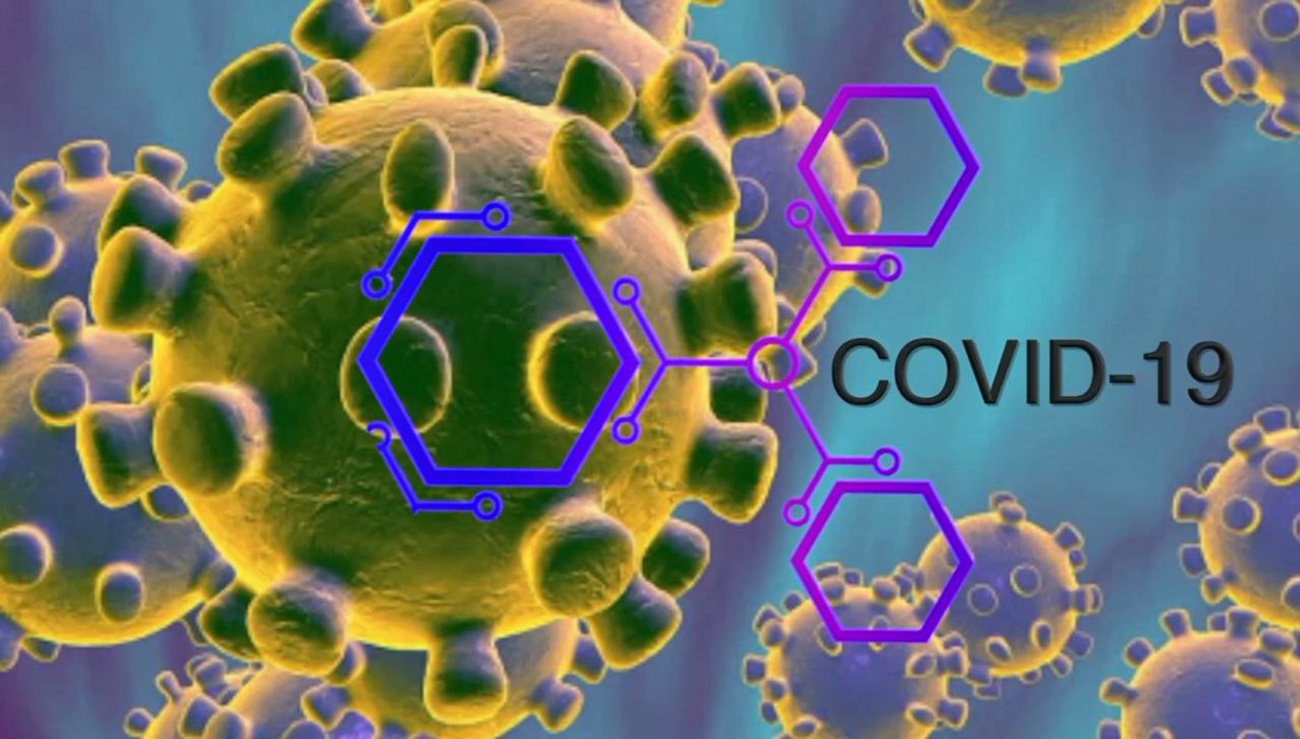
Routes of Transmission 2019-nCoV and Optometry Practice
Abstract:
A novel β-coronavirus (2019 novel coronavirus) affected severe as well to uniform fetal pneumonia, travelled through a seafood bazaar of Wuhan town, Hubei region, China, also quickly extent toward excess boonies of China and more nations. The 2019-nCoV existed dissimilar after SARS-CoV, then cooperative the similar crowd receptor the social ACE2 (angiotensin-converting enzyme2). The regular crowd of 2019 novel coronavirus could conventional continue bat Rhinolophusaffin is a 2019 novel coronavirus presented 96.2% of entire-genome character toward BatCoV RaTG13. The person-to-person spread methods of 2019-nCoV involved tool, identical cough, sneeze droplet inhalation transmission, and obtain in-tuned with transmission, just like the interaction by way of oral, nasal, as well as eye mucous films. 2019-nCoV container too exist spread over the saliva, also thus the fetal–oral ways similarly can remain a possible person-to-person spread mode. The observers now optometry run through representation just before the incredible danger of 2019-nCoV contagion because of the face-to-face announcement too thus the expose en route for tears, plasma, plus additional body liquids, besides therefore the diagnostic and treatment of apparatuses. Eye care professional perform inordinate heroes in stopping the spread of 2019-nCoV. At this time we indorse the contagion control actions all through optometry exercise just before block the person-to-person spread ways in eye care health center as well as hospitals.
Author(s):
DOI:
Keywords:
References:
Al-Tawfiq, J. A., Zumla, A. & Memish, Z. A. (2014). Coronaviruses: Severe acute respiratory syndrome coronavirus and Middle East respiratory syndrome coronavirus in travelers. Curr. Opin. Infect. Dis. 27(5), 411–417. https://doi.org/10.1097/QCO.0000000000000089
Backer, J. A., Klinkenberg, D. & Wallinga, J. (2020). Incubation period of 2019 novel coronavirus (2019-nCoV) infections among travellers from Wuhan, China, 20–28 January 2020. Euro. Surveill., 25(5), 1-6. https://doi.org/10.2807/1560-7917.ES.2020.25.5.2000062
Bai, Y., Nie, X. & Wen, C. (2020). Epidemic prediction of 2019-nCoV in Hubei province and comparison with SARS in Guangdong province. The lancet. Available at SSRN: https://papers.ssrn.com/sol3/papers.cfm?abstract_id=3531427
Belouzard, S., Millet, J. K., Licitra, B. N. & Whittaker, G. R. (2012). Mechanisms of coronavirus cell entry mediated by the viral spike protein. Viruses, 4(6), 1011-1033. https://doi.org/10.3390/v4061011
Belser, J. A., Rota, P. A. & Tumpey, T. M. (2013). Ocular tropism of respiratory viruses. Microbiol. Mol. Biol. Rev., 77(1), 144–156. https://doi.org/10.1128/MMBR.00058-12
Chai, X. et al. (2020). Specific ACE2 expression in cholangiocytes may cause liver damage after 2019-nCoV infection. Preprint at https://www.biorxiv.org/content/10.1101/2020.02.03.931766v1
Cleveland, J. L. et al. (2016). Transmission of blood-borne pathogens in US dental healthcare settings: 2016 update. J. Am. Dent. Assoc. 147(9), 729–738. https://doi.org/10.1016/j.adaj.2016.03.020
Chen, J. (2020). Pathogenicity and transmissibility of 2019-nCoV—a quick overview and comparison with other emerging viruses. Microb. Infect., 22(2), 69-71. https://doi.org/10.1016/j.micinf.2020.01.004
Chan, J. F. W. et al. (2020). A familial cluster of pneumonia associated with the 2019novel coronavirus indicating person-to-person transmission: a study of a family cluster. Lancet, 395 (10223), 514–523. https://doi.org/10.1016/S0140-6736(20)30154-9
Chen, N. et al. (2020). Epidemiological and clinical characteristics of 99 cases of 2019novel coronavirus pneumonia in Wuhan, China: a descriptive study. Lancet 395, 507–513. https://doi.org/10.1016/S0140-6736(20)30211-7
De Wit, E., Van Doremalen, N., Falzarano, D. & Munster, V. J. (2016). SARS and MERS: recent insights into emerging coronaviruses. Nat. Rev. Microbiol., 14, 523–534. https://doi.org/10.1038/nrmicro.2016.81
Falsey, A. R. & Walsh, E. E. (2003). Novel coronavirus and severe acute respiratory syndrome. Lancet, 361(9366), 1312–1313. https://doi.org/10.1016/S0140-6736(03)13084-X
Fan, C., Li, K., Ding, Y., Lu, W. L. & Wang, J. (2020). ACE2 expression in kidney and testis may cause kidney and testis damage after 2019-nCoV infection. Preprint at https://www.medrxiv.org/content/10.1101/2020.02.12.20022418v1
Fan, Y., Zhao, K., Shi, Z. L. & Zhou, P. (2019). Bat coronaviruses in China. Viruses, 11(3), 210. https://doi.org/10.3390/v11030210
Fehr, A. R. & Perlman, S. (2015). Coronaviruses: an overview of their replication and pathogenesis. Methods Mol. Biol., 1282, 1–23. https://doi.org/10.1007/978-1-4939-2438-7_1
Gorbalenya, A. E. et al. (2020). Severe acute respiratory syndrome-related coronavirus: The species and its viruses—a statement of the Coronavirus Study Group. Preprint at https://www.biorxiv.org/content/10.1101/2020.02.07.937862v1
Gorbalenya, A., Enjuanes, L., Ziebuhr, J. & Snijder, E. (2006). Nidovirales: evolving the largest RNA virus genome. Virus Res. 117(1), 17–37. https://doi.org/10.1016/j.virusres.2006.01.017
Guan, W. J. et al. (2020). Clinical characteristics of 2019 novel coronavirus infection in China. Preprint at https://www.medrxiv.org/content/10.1101/2020.02.06.20020974v1
Guy, J. L., Lambert, D. W., Warner, F. J., Hooper, N.M. & Turner, A. J. (2005). Membrane associated zinc peptidase families: comparing ACE and ACE2. Biochim. Biophysi. Acta 1751(1), 2–8. https://doi.org/10.1016/j.bbapap.2004.10.010
Hantak, M. P., Qing, E., Earnest, J. T. & Gallagher, T. (2019). Tetraspanins: architects of viralentry and exit platforms. J. Virol., 93(6), 1-8. https://doi.org/10.1128/JVI.01429-17
Harrel, S. K. & Molinari, J. (2004). Aerosols and splatter in dentistry: a brief review of the literature and infection control implications. J. Am. Dent. Assoc., 135(4), 429–437. https://doi.org/10.14219/jada.archive.2004.0207
Hoffmann, M. et al. (2020). The novel coronavirus 2019 (2019-nCoV) uses the SARS coronavirus receptor ACE2 and the cellular protease TMPRSS2 for entry into target cells. Preprint at https://www.biorxiv.org/content/10.1101/2020.01.31.929042v1.full
Holmes, K. V. (2003). SARS-associated coronavirus. N. Engl. J. Med., 348, 1948–1951. https://doi.org/10.1056/NEJMp030078
Holshue, M. L. et al. (2020). First Case of 2019 Novel coronavirus in the United States. N. Engl. J. Med. 382, 929-936. https://doi.org/10.1056/NEJMoa2001191
Huang, Q. & Herrmann, A. (2020). Fast assessment of human receptor-binding capability of 2019 novel coronavirus (2019-nCoV). Preprint at https://www.biorxiv.org/content/10.1101/2020.02.01.930537v1
Huang, C. et al. (2020). Clinical features of patients infected with 2019 novel coronavirusin Wuhan, China. Lancet, 395, 497–506. https://doi.org/10.1016/S0140-6736(20)30183-5
Hu, T., Li, G., Zuo, Y. & Zhou, X. (2007). Risk of hepatitis B virus transmission via dental hand pieces and evaluation of an anti-suction device for prevention of transmission. Infect. Control Hosp. Epidemiol, 28(1), 80–82. https://doi.org/10.1086/510808
Kampf, G., Todt, D., Pfaender, S. & Steinmann, E. (2020). Persistence of corona viruses on inanimate surfaces and its inactivation with biocidal agents. J. Hosp. Infect., 104(3), 246-251. https://doi.org/10.1016/j.jhin.2020.01.022
Lei, C. et al. (2020). Potent neutralization of 2019 novel coronavirus by recombinant ACE2-Ig. Preprint at https://www.biorxiv.org/content/10.1101/2020.02.01.929976v2
Li, Q. et al. (2020). Early transmission dynamics in Wuhan, China, of novel coronavirus–infected pneumonia. N. Engl. J. Med., 382(13), 1199-1207. https://doi.org/10.1056/NEJMoa2001316
Li, F. (2016). Structure, function, and evolution of coronavirus spike proteins. Annu. Rev.Virol. 3, 237–261. https://doi.org/10.1146/annurev-virology-110615-042301
Liu, L. et al. (2011). Epithelial cells lining salivary gland ducts are early target cells of severe acute respiratory syndrome coronavirus infection in the upper respiratory tracts of rhesus macaques. J. Virol. 85(8), 4025–4030. https://doi.org/10.1128/JVI.02292-10
Liu, P., Chen, W. & Chen, J. P. (2019). Viral metagenomics revealed sendai virus and coronavirus infection of malayan pangolins (Manisjavanica). Viruses, 11(11), 979. https://doi.org/10.3390/v11110979
Liu, T. et al. (2020). Transmission dynamics of 2019 novel coronavirus (2019-nCoV). The Lancet. Available at SSRN: https://papers.ssrn.com/sol3/papers.cfm?abstract_id=3526307
Lu, C. W., Liu, X. F. & Jia, Z. F. (2020). 2019-nCoV transmission through the ocular surface must not be ignored. The Lancet, 395, 39. https://doi.org/10.1016/S0140-6736(20)30313-5
Nakagawa, K., Lokugamage, K. G. & Makino, S. (2016). Chapter Five – Viral and Cellular mRNA Translation in Coronavirus-Infected Cells. Advances in Virus Research, 96, 165–192. https://doi.org/10.1016/bs.aivir.2016.08.001
Otter, J. A. et al. (2016). Transmission of SARS and MERS corona viruses and influenza virus in healthcare settings: the possible role of dry surface contamination. J. Hosp. Infect. 92(3), 235–250. https://doi.org/10.1016/j.jhin.2015.08.027
Perlman, S. & Netland, J. (2009). Coronaviruses post-SARS: update on replication and pathogenesis. Nat. Rev. Microbiol. 7, 439–450. https://doi.org/10.1038/nrmicro2147
Rodriguez-Morales, A. J., MacGregor, K., Kanagarajah, S., Patel, D. & Schlagenhauf, P. (2020). Going global – Travel and the 2019 novel coronavirus. Travel. Med. Infect. Dis., 33, 101578. https://doi.org/10.1016/j.tmaid.2020.101578
Rothe, C. et al. (2020). Transmission of 2019-nCoV infection from an asymptomatic contact in Germany. N. Engl. J. Med., 382, 970-971. https://doi.org/10.1056/NEJMc2001468
Seto, W. H. et al. (2003). Effectiveness of precautions against droplets and contact inprevention of nosocomial transmission of severe acute respiratory syndrome (SARS). Lancet, 361(9368), 1519–1520. https://doi.org/10.1016/S0140-6736(03)13168-6
Song, Z. et al. (2019). From SARS to MERS, thrusting coronaviruses into the spotlight. Viruses, 11(1), 59. https://doi.org/10.3390/v11010059
Samaranayake, L. P. & Peiris, M. (2004). Severe acute respiratory syndrome and dentistry: a retrospective view. J. Am. Dent. Assoc., 1359(9), 1292–1302. https://doi.org/10.14219/jada.archive.2004.0405
Samaranayake, L. P., Reid, J. & Evans, D. (1989). The efficacy of rubber dam isolation in reducing atmospheric bacterial contamination. ASDC J. Dent. Child, 56, 442–444.
The Lancet, (2013). MERS-CoV: a global challenge. Lancet, 381(9882), 1960. https://doi.org/10.1016/S0140-6736(13)61184-8
The Novel Coronavirus Pneumonia Emergency Response Epidemiology Team (2020). The epidemiological characteristics of an outbreak of 2019 novel corona virus diseases (COVID-19) in China. Chinese Journal of Epidemiology, 41, 145–151.
Tian, X. et al. (2020). Potent binding of 2019 novel coronavirus spike protein by a SARS coronavirus specific human monoclonal antibody. Emerg. Microbes. Infect. 9, 382–385. https://doi.org/10.1080/22221751.2020.1729069
To, K. K. W. et al. (2020). Consistent detection of 2019 novel coronavirus in saliva. Clin. Infect. Diseases. https://doi.org/10.1093/cid/ciaa149
Wahba, L. et al. (2020). Identification of a pangolin niche for a 2019-nCoV-like coronavirus through an extensive meta-metagenomic search. Preprint at https://www.biorxiv.org/content/10.1101/2020.02.08.939660v2
Wan, Y., Shang, J., Graham, R., Baric, R. S. & Li, F. (2020). Receptor recognition by novel coronavirus from
Wuhan: an analysis based on decade-long structural studies of SARS. J. Virol. 94(7), 1-9. https://doi.org/10.1128/JVI.00127-20
Wang, C., Horby, P. W., Hayden, F. G. & Gao, G. F. (2020). A novel coronavirus outbreak of global health concern. Lancet, 395, 470–473. https://doi.org/10.1016/S0140-6736(20)30185-9
Wang, D. et al. (2020). Clinical characteristics of 138 hospitalized patients with 2019 novel coronavirus infected pneumonia in Wuhan, China. JAMA, 323(11), 1061-1069. https://doi.org/10.1001/jama.2020.1585
Wax, R. S. & Christian, M. D. (2020). Practical recommendations for critical care and anesthesiology teams caring for novel coronavirus (2019-nCoV) patients. Canadian Journal of Anesthesia/Journal canadiend’anesthésie, 67, 568–576. https://doi.org/10.1007/s12630-020-01591-x
Wei, J. & Li, Y. (2016). Airborne spread of infectious agents in the indoor environment. Am. J. Infect. Control, 44(9), 102–108. https://doi.org/10.1016/j.ajic.2016.06.003
Weiss, S. & Leibowitz, J. (2011). Coronavirus pathogenesis. Adv. Virus Res., 81, 85–164. https://doi.org/10.1016/B978-0-12-385885-6.00009-2
Wrapp, D. et al. (2020). Cryo-EM structure of the 2019-nCoV spike in the pre fusion conformation. Science, 367(6483), 1260-1263. https://doi.org/10.1126/science.abb2507
Wu, F. et al. (2020). A new coronavirus associated with human respiratory disease in China. Nature, 579, 265–269. https://doi.org/10.1038/s41586-020-2008-3
Yin, Y. & Wunderink, R. G. (2018). MERS, SARS and other coronaviruses as causes of pneumonia. Respirology, 23, 130–137. https://doi.org/10.1111/resp.13196
Zhao, Y. et al. (2020). Single-cell RNA expression profiling of ACE2, the putative receptor of Wuhan 2019-nCoV. Preprint at https://www.biorxiv.org/content/10.1101/2020.01.26.919985v1
Zhou, P. et al. (2020). A pneumonia outbreak associated with a new coronavirus of probable bat origin. Nature, 579, 270–273. https://doi.org/10.1038/s41586-020-2012-7
Zhu, N. et al. (2020). A novel coronavirus from patients with pneumonia in China, 2019. N. Engl. J. Med., 382(8), 727-733. https://doi.org/10.1056/NEJMoa2001017




